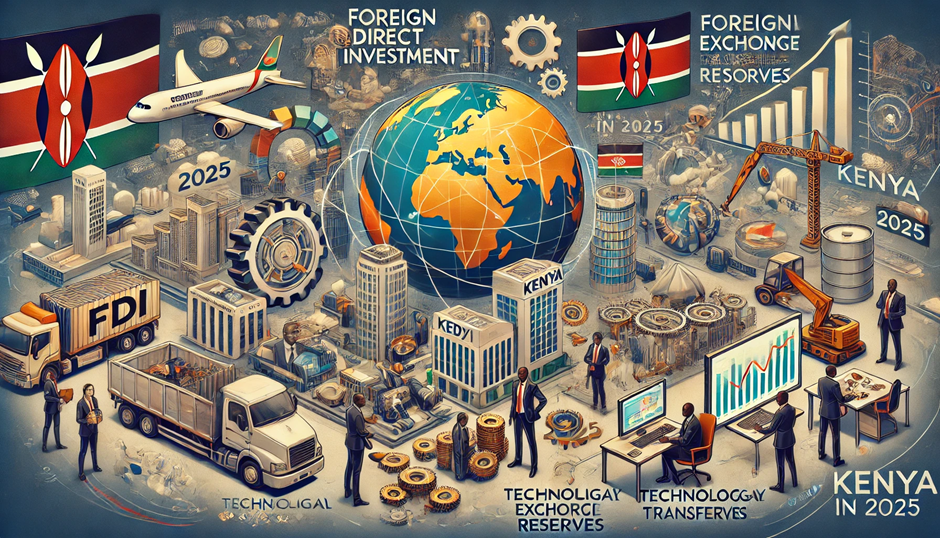
How E-commerce is Disrupting Traditional Retail in Kenya
Introduction

Kenya’s retail landscape has undergone a major transformation over the past decade, with e-commerce playing a pivotal role in shifting consumer shopping behaviors. With increased internet penetration, smartphone usage, and digital payment solutions, e-commerce platforms are rapidly gaining traction. As we move through 2025, traditional brick-and-mortar retailers are facing unprecedented disruption, forcing them to adapt or risk obsolescence. This blog explores the evolution of Kenya’s e-commerce industry, the impact on traditional retail, emerging trends, and future prospects for the sector.
The Growth of E-commerce in Kenya

Internet and Smartphone Penetration
Kenya has one of the highest internet penetration rates in Africa, with over 85% of the population having internet access.
Smartphone affordability has enabled more Kenyans to shop online, fueling the rapid expansion of e-commerce.
The Rise of Digital Payments
Mobile money services such as M-Pesa have revolutionized digital transactions, making online shopping seamless and secure.
The integration of digital wallets, buy-now-pay-later (BNPL) schemes, and cryptocurrency payments is further enhancing convenience for online shoppers.
Leading E-commerce Platforms
Jumia, Kilimall, and Copia are among the major players dominating Kenya’s e-commerce market.
Social commerce through platforms like Facebook, Instagram, and WhatsApp Business has also seen exponential growth, allowing small businesses to reach customers directly.
How E-commerce is Disrupting Traditional Retail

Changing Consumer Preferences
Convenience: Online shopping offers 24/7 availability, home delivery, and access to a wider variety of products compared to physical stores.
Price Comparison: Consumers can easily compare prices and find discounts, making e-commerce platforms more attractive.
Personalized Shopping Experience: AI-driven recommendations and targeted advertisements have enhanced the customer experience, something traditional retailers struggle to match.
Declining Foot Traffic in Physical Stores
Many retailers, especially in urban centers, have reported a decline in walk-in customers as more consumers opt for online shopping.
The COVID-19 pandemic accelerated the shift towards e-commerce, and many businesses that were slow to adapt suffered losses.
The Shift Towards Omnichannel Retailing
To stay competitive, traditional retailers are adopting hybrid models that integrate online and offline shopping experiences.
Supermarkets and fashion brands now offer click-and-collect services, online catalogs, and digital loyalty programs.
Challenges Facing E-commerce Growth in Kenya
Logistics and Last-Mile Delivery
Poor infrastructure and inefficient postal services make last-mile delivery a challenge, especially in rural areas.
Companies like Glovo, Sendy, and Safaricom’s Masoko are investing in logistics solutions to address this gap.
Consumer Trust and Fraud Concerns
Cases of online fraud, fake products, and delayed deliveries have made some consumers hesitant to fully embrace e-commerce.
Platforms are enhancing trust by implementing strict seller verification processes and offering secure payment options.
Digital Literacy and Accessibility
Although smartphone penetration is high, a significant portion of the population lacks digital literacy, limiting their engagement with e-commerce platforms.
Initiatives by the government and private sector to provide digital training and affordable internet access are helping bridge this gap.
The Future of E-commerce in Kenya
Expansion of AI and Automation
AI-driven chatbots, voice commerce, and predictive analytics are set to enhance the online shopping experience.
Automation in warehousing and logistics will improve efficiency and reduce operational costs.
Growth of Social Commerce
Influencer marketing and live shopping experiences on social media platforms are expected to drive more online sales.
Integration of e-commerce features into WhatsApp, TikTok, and Instagram will further simplify digital shopping.
Cross-Border E-commerce Opportunities
With initiatives such as the African Continental Free Trade Area (AfCFTA), Kenyan businesses will have more opportunities to trade across African markets.
Improved logistics networks and trade policies will facilitate seamless cross-border transactions.
Conclusion
E-commerce has fundamentally altered Kenya’s retail industry, offering consumers convenience, affordability, and greater variety. While traditional retail is not disappearing entirely, businesses must innovate and embrace digital transformation to remain competitive. The future of retail in Kenya will likely be a blend of online and offline experiences, with technology driving efficiency and customer satisfaction. As e-commerce continues to evolve, its impact on the economy and business landscape will be profound.
References
Communications Authority of Kenya – www.ca.go.ke
Central Bank of Kenya – Digital Payments Report – www.centralbank.go.ke
Jumia Kenya – E-commerce Market Insights – www.jumia.co.ke
World Bank – Digital Economy in Kenya – www.worldbank.org
Safaricom – M-Pesa and Digital Transactions – www.safaricom.co.ke








